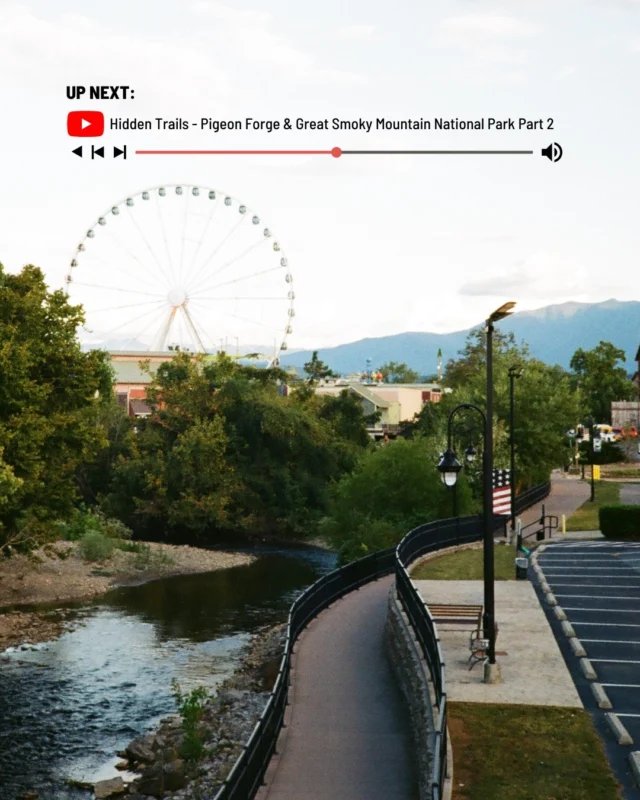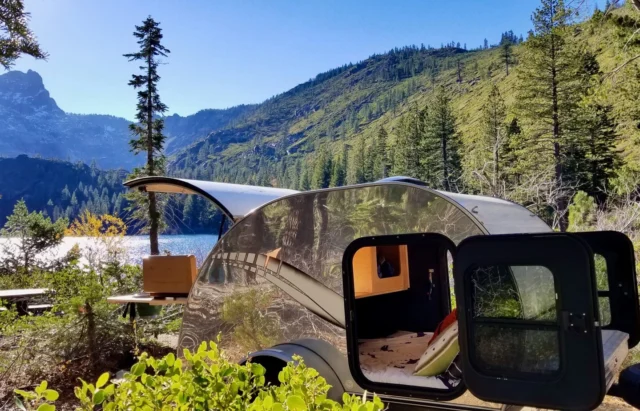
When we hit the road full-time in our RV, we expected a fair share of challenges. What we didn’t expect was to go through 10 tires in just a little over two years. Yep. Ten. And nope, we’re not exaggerating. Between our travel trailer and Chevy pickup, a few of those tires were repeat offenders. Whether it was bad luck, bad roads, or a tire curse we unknowingly triggered, we quickly learned that tire trouble is one of the most frustrating (and wallet-draining) parts of RV life.
Some Of Our Tire Fiascos
We’ve had screws in places that can’t be patched (seriously, why is it always there?), a blown brake line that shredded a tire before we even knew what happened, and a “professional” patch job that started leaking three days later. Each mishap was costly, stressful, and at times, dangerous. But through the chaos, we learned some important lessons: always carry a spare, double-check every repair, and don’t skip regular inspections—because that one “kind of low” tire can quickly become your next big problem. Whether you’re new to RV life or a seasoned traveler, take our advice—never underestimate the importance of tire awareness.
When to Replace Your RV Tires
RV tires don’t just wear down from mileage; they degrade with time, weather, and how your rig is stored. Even if you haven’t driven much, your tires can become unsafe. Here are the key indicators that it’s time for a replacement:
- Age: Replace tires every 5–7 years regardless of tread depth. Check the DOT date code stamped on the sidewall.
- Cracks or Dry Rot: Fine lines on the sidewalls signal UV and ozone damage and can lead to failure.
- Tread Wear: If tread is below 2/32″, or if wear is uneven, it’s time for a change.
- Bulges or Bubbles: These usually indicate internal structural damage—replace immediately.
- Frequent Air Loss: A consistent drop in pressure could point to internal damage or an improper patch.

Our Go-To: Discount Tire
We always try to buy our tires through Discount Tire, and we can’t recommend them enough. Their nationwide network of over 1,000 locations is incredibly convenient when you’re full-time on the road. Plus, their Road Hazard warranty saved us more than once. After a brake malfunction shredded a brand-new tire, their warranty made the replacement painless—and free. That’s when we realized: tire warranties are absolutely worth it.
Is a Tire Warranty Really Worth It?
Like we said above—yes, 100%! We used to think tire warranties were unnecessary… until we had a brand-new tire destroyed by a brake malfunction. That one incident would’ve paid for the coverage several times over. Here’s what you should consider before passing on the extra protection.
Types of Coverage:
- Manufacturer Warranty: Covers manufacturing defects—not road damage. Limited value for RVers.
- Road Hazard Protection: Covers potholes, nails, and debris (offered by Discount Tire, Costco, etc.).
- Extended RV-Specific Plans: Broader coverage including blowouts, rim damage, and labor (e.g., Good Sam).
Top Warranty Options:
- Michelin Promise Plan: Includes defect coverage and 3 years of roadside assistance.
- Goodyear RV Warranty: Defect coverage plus emergency services.
- Good Sam Tire & Wheel Protection: Pro-rated tire replacements, roadside repair, and rim/blowout protection.
Why We Swear By the Discount Tire Road Hazard Certificate
If you’re full-time or travel often, for us this is the gold standard:
- Nationwide Coverage: Over 1,000 locations between Discount Tire and America’s Tire.
- Full Replacement Guarantee: If they can’t fix it, they’ll replace it—often at no cost.
- Covers the Common Stuff: Nails, screws, potholes, blowouts—you name it.
- Transferable: Any store will honor your certificate, not just the one you bought from.
- Fast, No-Hassle Claims: We’ve had quick service at multiple locations with no headaches.
Cost: Typically around $25 per tire, depending on size/type.
Pro Tip: Even if you order tires online from Discount Tire Direct, you can still add the certificate when you have them installed at a participating location.
Where to Find the Best Tire Deals
Whether you’re replacing a single tire or upgrading your full set, here are smart ways to save:
Tire Discount Programs:
- FMCA Tire Savings Program: check out the program here! Big-name brand discounts (Michelin, Continental, Goodyear).
- Discount Tire Direct: Watch for online rebates, bundles, and free shipping.
- Good Sam Tire & Wheel Protection: Comes with built-in discounts on repairs and replacements.
- RV Retailers: Stores like Camping World or GCR Tires often have sales around RV season.
Online Deals:
- Discount Tire Direct and SimpleTire offer rotating deals, free shipping, and rebates.
- Some let you ship directly to a local installer or RV park.
- Always confirm tire size, load rating, and DOT date before purchasing.
Sales & Rebates:
- Best times to buy? Memorial Day, Labor Day, and Black Friday.
- Tire brands often offer rebates when buying four or more.
Used & Take-Off Tires:
- Some shops sell lightly used or “take-off” tires at steep discounts. Be sure though if going this route, check the DOT date and inspect for damage or uneven wear.

Tire Maintenance Tips That Save Money (and Protect Your Warranty)
Consistent tire maintenance not only stretches your tire budget but can also keep your warranty valid—and more importantly, keep your RV safe. Whether you’re running with a basic manufacturer warranty or an extended road hazard plan, these habits will help you avoid preventable wear and costly surprises.
Before You Roll Out:
- Inspect Every Tire: Look for sidewall cracks, bulges, embedded objects, and uneven tread wear.
- Use a TPMS (Tire Pressure Monitoring System): It won’t prevent a flat, but it’ll alert you to pressure drops before a small issue becomes a big problem.
- Check Inflation Regularly: Follow your rig’s PSI recommendation (often inside the driver’s doorframe), and adjust for temperature swings and added weight.
Ongoing Maintenance That Pays Off:
- Rotate Every 5,000–8,000 Miles: Promotes even wear—don’t forget the spare!
- Balance and Align as Needed: Uneven wear from bad alignment or suspension issues can void warranties and reduce tire life.
- Keep Your Receipts: Proof of rotations, balances, and alignments can help if you ever need to file a warranty claim.
Protect From the Elements:
- Use UV Covers When Parked: Sun exposure speeds up dry rot.This is something we haven’t invested in since we normally move around weekly but definitely something to consider if parked for longer stays.
- Apply UV Protectant Sprays: Adds another layer of defense against cracking and aging.
- Avoid Parking on Grass or Dirt: Moisture and debris can break down sidewalls over time.
- Use Tire Pads or Leveling Blocks: Helps prevent moisture buildup and reduces pressure points that lead to premature wear. We love our stackable leveling blocks!
Final Thoughts: Keep Rolling and Keep Your Cool
After blowing through 10 tires in two years, we’ve learned that RV tires aren’t just what keep you moving—they’re what keep you safe, sane, and on schedule. Tire trouble can derail your trip fast, but with the right care, a solid warranty, and a few smart shopping tips, you can avoid the worst of it. Whether you travel full-time or just on weekends, a little attention goes a long way. Here’s to fewer flats and smoother miles ahead!
More Helpful Resources About RV Tires:






